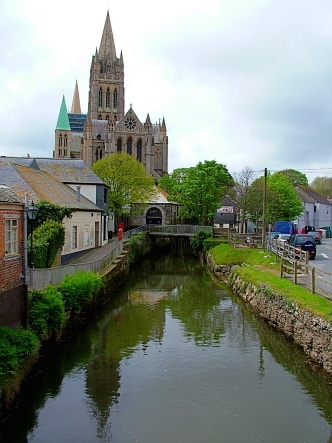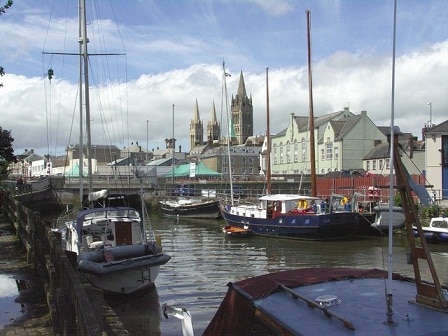truro is a city in the region of Cornwall in the United Kingdom. The chronicles relate that Truro grew initially as an important commercial center of its port and later as a tin mine city for the mining industry.
The city is known for its Cathedral (completed in 1910), cobbled streets, open spaces and Georgian architecture. Places of interest include the Royal Cornwall Museum, the Hall for Cornwall, Cornwall Courts of Justice and the Cornwall Council.
The oldest records and archaeological finds of a permanent settlement in the Truro area date back to the 12th century. A castle was built in the XNUMXth century by Richard de Luci, Chief Justice of England in the reign of Henry II, he received land in Cornwall for his services to the court, including around the confluence of the two rivers. He planted the city in the shadow of the castle and granted municipality status to economic activity.
At the beginning of the 14th century Truro was an important port thanks to the supersperity of the fishing industry and the new role as one of Cornwall's tin mining towns.
Truro is located in central western Cornwall approximately 9 miles (14 km) from the coast to the south at the confluence of the rivers Kenwyn and Allen, which both combine to become the River Truro and valleys leading to the River Fal and then in the great natural harbor of Carreteras Carrick.
The city is surrounded by a number of protected natural areas such as the historical parks at Pencalenick, and large areas of the ornamental landscape, such as Trelissick Garden and Tregothna. An area to the south-east of the city, around and between Calenick Creek, has been designated an Area of Outstanding Natural Beauty.
Other protected areas include an area of high scenic value comprising agricultural lands and forested valleys in the northeast, and Daubuz, a local nature reserve located along the Allen River near the city center.

